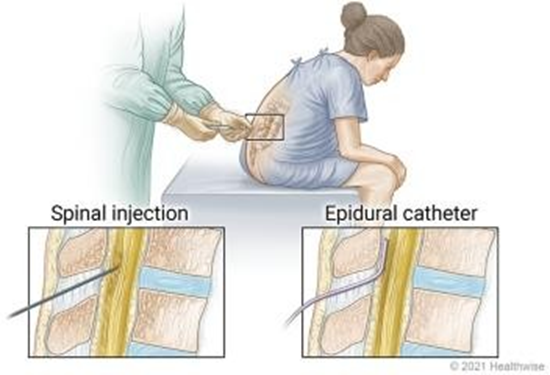A nurse is preparing to administer erythromycin 2 g PO daily in equally divided doses every 6 hr. How many mg should the nurse administer per dose? (Round the answer to the nearest whole number. Use a leading zero if it applies. Do not use a trailing zero.)
The Correct Answer is ["500"]
To calculate the dose of erythromycin per administration, you can follow these steps:
- Determine the total daily dose: 2 g.
- Divide the total daily dose by the number of equally divided doses per day: 2 g / 4 doses =
0.5 g per dose.
- Convert grams to milligrams: 0.5 g * 1000 mg/g = 500 mg.
So, the nurse should administer 500 mg of erythromycin per dose.
Nursing Test Bank
Naxlex Comprehensive Predictor Exams
Related Questions
Correct Answer is C
Explanation
A. Urinary retention: While urinary retention can be a complication of epidural anesthesia, it is not the priority finding in this scenario. The priority is to address potential complications that can lead to maternal or fetal compromise.
B. Leg weakness: Leg weakness can occur as a side effect of epidural anesthesia but is not the priority finding in this scenario unless it is severe and compromises the client's ability to
mobilize or push during labor.
C. Hypotension: Hypotension is a common complication of epidural anesthesia due to sympathetic blockade, which can lead to decreased venous return and subsequent maternal
hypotension. Maternal hypotension can compromise uteroplacental perfusion, leading to fetal distress. Therefore, addressing hypotension promptly is the priority to prevent adverse maternal and fetal outcomes.
D. Temperature 39°C (102.2°F): While fever should be monitored and addressed, it is not the priority finding in this scenario unless it indicates an infection, which would require further assessment and intervention. However, maternal hypotension poses a more immediate risk to both the mother and the fetus during labor.

Correct Answer is C
Explanation
A. Laryngospasm: Laryngospasm is not a commonly associated adverse effect of alteplase administration. It is more commonly associated with airway irritants or allergic reactions.
B. Polycythemia: Polycythemia, or an abnormally high red blood cell count, is not a typical adverse effect of alteplase administration. Alteplase is a thrombolytic agent used to dissolve blood clots and is not associated with increasing red blood cell production.
C. Hemorrhage: Hemorrhage, or bleeding, is the most significant adverse effect associated with alteplase administration. Alteplase works by promoting fibrinolysis and can increase the risk of bleeding, including intracranial hemorrhage, particularly in the context of thrombolytic therapy for stroke.
D. Steatorrhea: Steatorrhea, or fatty stools, is not a commonly associated adverse effect of alteplase administration. It is more commonly associated with malabsorption disorders or pancreatic insufficiency.
Whether you are a student looking to ace your exams or a practicing nurse seeking to enhance your expertise , our nursing education contents will empower you with the confidence and competence to make a difference in the lives of patients and become a respected leader in the healthcare field.
Visit Naxlex, invest in your future and unlock endless possibilities with our unparalleled nursing education contents today
Report Wrong Answer on the Current Question
Do you disagree with the answer? If yes, what is your expected answer? Explain.
Kindly be descriptive with the issue you are facing.
